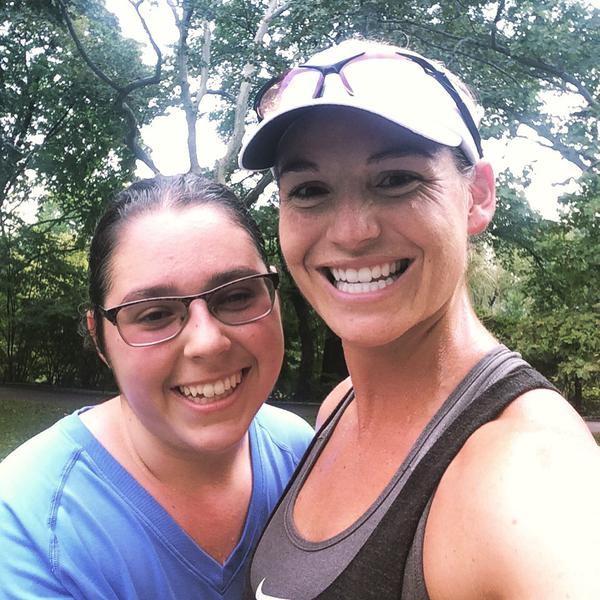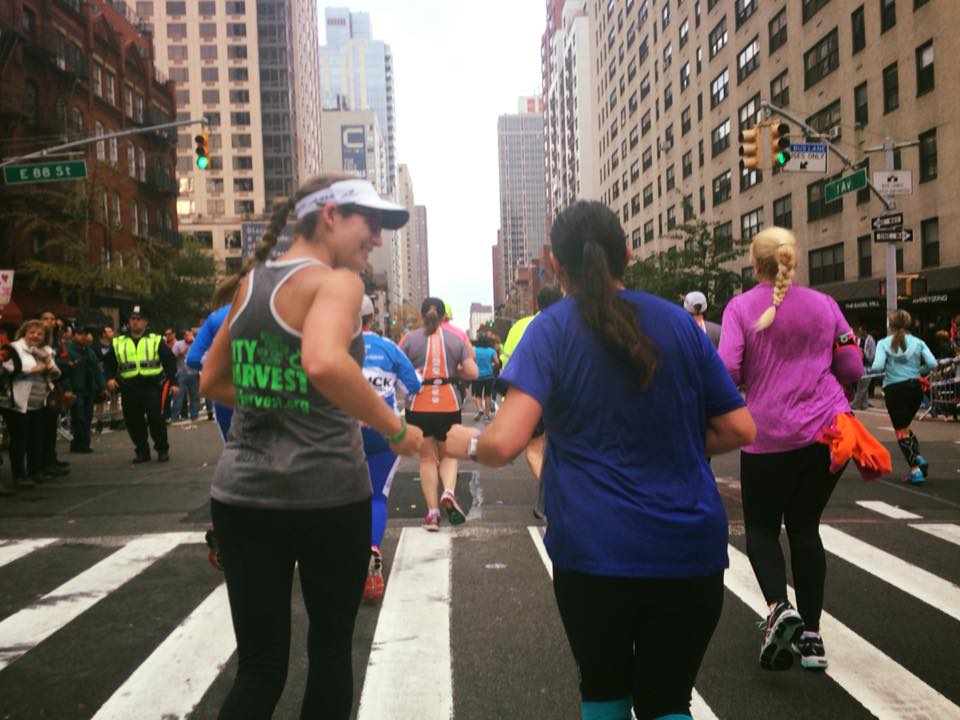 On May 15th I ran my first solo marathon since Boston 2015. My goal was simple: lock in a BQ. While I felt pretty confident I’d complete a 3:15-3:30 marathon, a whole lot can happen in the course of 26.2 miles. Plus, this marathon was a short two weeks since my “A” race for 2016, the Broad Street Run.
On May 15th I ran my first solo marathon since Boston 2015. My goal was simple: lock in a BQ. While I felt pretty confident I’d complete a 3:15-3:30 marathon, a whole lot can happen in the course of 26.2 miles. Plus, this marathon was a short two weeks since my “A” race for 2016, the Broad Street Run.
I’d never run the Pocono Marathon before, but I signed up for it for a few reasons: the time of year sounded pretty optimal for my qualifier – still cool mornings and with plenty of time for me to recover before tackling training for Berlin Marathon. The course is over 1000 feet net downhill, which also sounded pretty darn appealing. Add the location, less than two hours from NYC, and it was the best fit. It sounded so good that my training partner and fellow Mile High Run Club Coach, Vinnie Miliano decided to join in the fun.
Here are a few things I loved about race weekend:
- Having the school open and runners hang out there pre-race was awesome. It was unseasonably cold (felt like 30 degrees at the start!), and so having a warm building with tons of public rest rooms was amazing. A huge perk. Can you imagine the difference this would have made in the rain? Game changer.
- The volunteers were awesome, and there was hydration/restrooms every 2 miles. This is a VERY rural race, and so the little support (no real spectators) made a huge difference. You always knew water and a smiling face was a few miles away.
- Post-race support. For a race that caps the marathon at 1600 runners, there were bagged sandwiches, muffins, orange slices, chocolate milk, bananas and water.
- The course. Though the back 10K is TOUGH (like REALLY fucking tough!!!!), I enjoyed the quiet, beautiful course until the back 10K. The 1000 feet downhill gave you some “free” miles, and the ups were often a nice change. I don’t know if I’d call the marathon course “fast,” but the half marathon course has PR written all over it.
Here are a few things I didn’t love about the weekend:
- On a point-to-point course, there is always transportation (shuttles) to the starting line from the finish line. Apparently this race was the exception to the rule. This meant runners hustled to book cabs from hotels to the starting line. There aren’t a ton of cab companies up in the Poconos, but I got lucky and booked one that we split with a few other runners. I booked a hotel walking distance from the finish line specifically for the reason of ending at the finish. There’s absolutely no way I was going to take a shuttle to the starting line and then drive my car BACK to my hotel after running a very hilly marathon. That was the current arrangement for this race, apparently. No good.
- Plastic cups on the race course. NOOOOO. The first cup I grabbed slipped out of my hand and spilled cold water all over me. I mentioned it was 30 degrees, right? The second cup didn’t slip, but it’s pretty impossible to fold a plastic cup and drink. Waxed paper cups are the only cups that belong on a race course – easy to grab, easy to fold, and easy to toss – in my humble opinion. This race made hydration a struggle.
- The course. Again, I LOVED the first 20 miles. And I don’t hate hills. But the inclines were pretty insane for the final 10K, and the road was open to traffic, which made it that much more of a struggle to focus when you weren’t sure where the next car would come from. I’d highly recommend one lane be totally closed and coned off for the runners.
At the end of the day, I ran my second-fastest marathon to date! I finished 5th overall woman, 1st in my AG, in the official time of 3:11:07. I clenched my Boston Qualifier by over 20 minutes. I’m pretty pleased with how my body held up, considering those final hills two weeks after my goal race. I am very hopeful for my goals in Berlin, and going into those goals with some confidence. Now it’s time for me to take my own advice and focus on some rest and recovery.
Would I run Pocono Marathon again? Probably not. But I’d definitely consider the half marathon for a PR course!
 It’s the time of year when runners signing up and tackling Autumn half marathons and marathons are thinking about their training and goals. It’s an exciting time. The impossible could become possible. Minds and bodies are fresh. You are likely pumped and ready to dive into training!
It’s the time of year when runners signing up and tackling Autumn half marathons and marathons are thinking about their training and goals. It’s an exciting time. The impossible could become possible. Minds and bodies are fresh. You are likely pumped and ready to dive into training!




